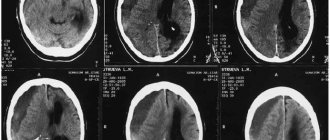Respiratory neurosis (or hyperventilation syndrome, HVS) is a neurotic disorder in which the slightest excitement is accompanied by increased ventilation of the lungs, which is primarily manifested by rapid breathing and shortness of breath. However, like other forms of neuroses, this disease causes not only dysfunction of the respiratory tract. The disorder does not have the best effect on the functioning of the immune, cardiovascular, endocrine, and genitourinary systems. In the treatment of HVS, specialists at the Leto mental health center pay priority attention to psychotherapy and non-drug methods of correcting the patient’s psycho-emotional state. In some cases, medications are required, and our doctors select medications with a high profile of clinical effectiveness and safety.
Etiology of respiratory neurosis
The main cause of the syndrome is a stressful situation . At the same time, doctors note that the level of resistance to the effects of psychotraumatic factors is strictly individual. One person can remain calm, cool and reasonable even in the face of quite serious problems, while another “loses his head” in the face of completely banal and quickly solvable family troubles. Therefore, it is impossible to name any universal stress factors that can provoke respiratory neurosis.
However, experts are convinced that people with a so-called “neurotic” character are at risk. They are distinguished by:
- suggestibility, dependence on other people's opinions;
- excessive emotional reaction to any, even minor events;
- desire to be the center of attention, fear of ridicule from others (including complete strangers);
- pessimistic attitude towards what is happening.
Persons suffering from certain somatic diseases are predisposed to the development of respiratory neurosis: chronic hypertension, atherosclerosis, coronary heart disease, bronchial asthma, obstructive pulmonary disease. The fact is that such pathologies are often accompanied by exacerbations, periods of pronounced deterioration in well-being, which becomes the cause of constant fear for one’s own life and health, and as a consequence, the development of a neurotic disorder.
Causes
In the 21st century, people began to suffer from more factors that cause mental changes. The body is an integral structure, which explains that pathologies of the central nervous system lead to significant disruptions in the respiratory system.
The nosology that we want to talk about has other names - hyperventilation syndrome and dysfunctional breathing. We clearly tell our patients about the reasons that lead to the occurrence of the described disorder. They can be divided into two large groups. This:
- mental illness;
- various situational psycho-emotional disorders.
The first group includes:
- neuroses - a group of diseases that manifest themselves as negative reactions in response to psychological trauma;
- psychoses - disorders of the central nervous system in which a person’s reactions are not adequate to the real situation;
- depression - significant depression of the central nervous system and many others.
Situational mental disorders that can provoke respiratory neurosis are understood as various changes that appear briefly in response to a strong psychological stimulus. They are usually observed as pronounced psycho-emotional lability. Most often, irritants such as:
- conflict at work;
- family quarrel;
- death of a loved one;
- partner's message about the decision to divorce;
- dismissal from work and so on.
Based on many years of clinical practice, our specialists have discovered that there are also factors that contribute to the occurrence of hyperventilation syndrome. This:
- respiratory nosologies;
- disorders of the autonomic nervous system;
- occupational hazards;
- bad habits - smoking, drinking alcohol, taking drugs;
- endocrine diseases and others.
Clinical manifestations
One of the main manifestations of the syndrome is shortness of breath, which occurs simultaneously with increased anxiety and restlessness. Breathing problems can be caused by:
- staying in a closed, stuffy room;
- “debriefing” at a work meeting;
- conflict with family members, friends;
- fright;
- any upcoming significant events (moving, traveling, major purchase, exams, interviews), etc.
With respiratory neurosis, there are several types of shortness of breath:
- "Empty" breath. The breathing movements are smooth and deep, but the patient claims that he “can’t breathe” and even a deep breath does not bring relief.
- Respiratory rhythm disturbances. The patient is constantly tormented by the fear of suffocation, so he carefully monitors the rhythm of inhalation and exhalation, which further aggravates anxiety, nervousness and other accompanying symptoms.
- Difficulty breathing syndrome. A person complains of a feeling of stiffness, squeezing, and a lump in the chest, which is why he cannot breathe fully.
Shortness of breath is far from the only symptom of respiratory neurosis. The attack may also be accompanied by:
- rapid heartbeat;
- discomfort, sometimes chest pain;
- changes in blood pressure;
- sweating, hot or cold flashes;
- headache and dizziness;
- tremor of fingers, eyelids, tongue;
- muscle tension, myalgia;
- nausea, feeling of dry mouth;
- stool disorders, flatulence.
Outside of exacerbation, the following symptoms are typical:
- insomnia;
- frequent urination;
- causeless increase in temperature (usually to subfebrile levels);
- fatigue, exercise intolerance.
Patients with respiratory neurosis are characterized by anxiety over any, even the most insignificant, reason, fussiness, and impatience. It is very difficult for a person to concentrate on something, he is tense, constantly on the verge of a breakdown, and suffers from bad premonitions.
Symptoms
There are two possible flow options - with crises and continuous. A typical triad of manifestations includes respiratory, emotional and muscular-tonic disorders. The following types of respiratory changes are distinguished:
- "Empty breath" . Accompanied by dissatisfaction with inhalation, a feeling of lack of air. Signs intensify in situations that provoke attacks of agoraphobia or social phobia (staying in the subway or a large supermarket, public speaking, exam).
- Automatic disorder . Due to the sensation of stopping breathing, patients constantly consciously monitor and regulate the process.
- Labored breathing . It is perceived as a feeling of obstacle, the need for tension. When inhaling, you may experience a lump in the throat, a feeling that air is not passing into the lungs.
- Hyperventilation equivalents . Includes snoring, yawning, coughing, and occasional deep breaths.
In the emotional sphere, anxiety, fear and increased tension predominate. Respiratory disorders accompany phobias or generalized anxiety disorder. A sharp increase in symptoms when a panic attack occurs is typical. Increased neuromuscular excitability is manifested by tetany, including paresthesia, numbness, burning sensation, convulsions and spasms. The listed symptoms are supplemented by psychovegetative reactions: sweating, palpitations, abdominal pain, dyspepsia, and increased urination.
Diagnostic methods
A comprehensive examination is necessary to exclude the organic nature of such a pathological condition. They start with the simplest and most accessible research:
- clinical and biochemical blood test;
- lipid profile;
- determination of hormonal levels;
- ECG, Echo-CG;
- chest x-ray.
If the presence of any disease is suspected, more detailed and “targeted” studies , capnography (quantitative determination of carbon dioxide in exhaled air), are prescribed.
To diagnose a neurotic disorder, special tests and questionnaires are used.
Cost of services
| CONSULTATIONS OF SPECIALISTS | |
| Initial consultation with a psychiatrist (60 min.) | 6,000 rub. |
| Repeated consultation | 5,000 rub. |
| Consultation with a psychiatrist-narcologist (60 min.) | 5,000 rub. |
| Consultation with a psychologist | 3,500 rub. |
| Consultation with Gromova E.V. (50 minutes) | 12,000 rub. |
| PSYCHOTHERAPY | |
| Psychotherapy (session) | 7,000 rub. |
| Psychotherapy (5 sessions) | 30,000 rub. |
| Psychotherapy (10 sessions) | 60,000 rub. |
| Group psychotherapy (3-7 people) | 3,500 rub. |
| Psychotherapy session with E.V. Gromova (50 minutes) | 12,000 rub. |
| TREATMENT IN A HOSPITAL | |
| Ward for 4 persons | 10,000 rub./day |
| Ward for 3 persons | 13,000 rub./day |
| Ward 1 bed VIP | 23,000 rub./day |
| Individual post | 5,000 rub. |
| PETE | 15,000 rub./day |
This list does not contain all prices for services provided by our clinic. The full price list can be found on the “Prices” , or by calling: 8(969)060-93-93. Initial consultation is FREE!
Principles of treatment
After confirmation of the diagnosis, a course of psychotherapy . First of all, the doctor explains to the patient that the shortness of breath, feeling of suffocation and lack of air that accompany respiratory neurosis are a consequence of psycho-emotional problems, and nothing threatens his life. This will reduce emotional stress, anxiety and fear.
The second stage of psychotherapy is to clarify the most significant psychotraumatic factor, which became the trigger for respiratory neurosis. It is important not only to remove the patient’s “fixation” on this event, but also to teach him to overcome other conflict situations. If it is difficult for a patient to express emotions verbally, the doctor suggests trying to draw his feelings, display them in music, modeling, poetry, a fairy tale - the specific method of therapy depends on the age and character traits of the patient.
Standard recommendations for respiratory neurosis are:
- correction of work and rest schedules;
- moderate (in accordance with age and health status) physical activity;
- active leisure (team sports, excursions, visiting the theater, cinema, etc. - everything that helps you “disconnect” from pressing problems in the family or at work, at least for a while);
- feasible mental stress;
- proper nutrition: no snacking, excess weight only aggravates the symptoms of respiratory neurosis and often becomes the cause of additional complexes; the diet must include seasonal vegetables and fruits, lean fish, meat, cereals, nuts, etc.
But in some cases, non-drug methods are not enough. The drug therapy regimen depends on the severity of respiratory neurosis, the presence of concomitant diseases, age and individual characteristics of the patient. To eliminate internal anxiety and improve the quality and duration of sleep, the following is prescribed:
- Sedatives. Herbal and homeopathic preparations are considered safer; they practically do not cause daytime sleepiness, but are effective only as part of complex therapy. For severe symptoms, tranquilizers are used.
- Antidepressants. A specific drug is selected exclusively on an individual basis.
- Nootropics . They improve blood supply to the brain, have a positive effect on memory and cognitive functions.
- Adaptogens and B vitamins. Help cope with anxiety and restlessness, and have a general calming effect.
For more detailed information about the treatment of respiratory neurosis at the Leto clinic, please call 24/7 8(969)060-93-93.
Signs
The main manifestations of respiratory neurosis are:
- shortness of breath - difficulty breathing;
- suffocation - a feeling of lack of air.
Also observed:
- dizziness;
- tremor (shaking) of the torso, upper and lower extremities;
- darkening of the eyes;
- feeling of a lump in the throat.
Signs often appear as in somatic nosologies - pain in the heart and behind the sternum, muscle pain and tension. Fainting may occur. Particularly impressionable, emotionally labile people develop a fear of death. When such patients come to our clinic, we pay special attention to reassure them.








